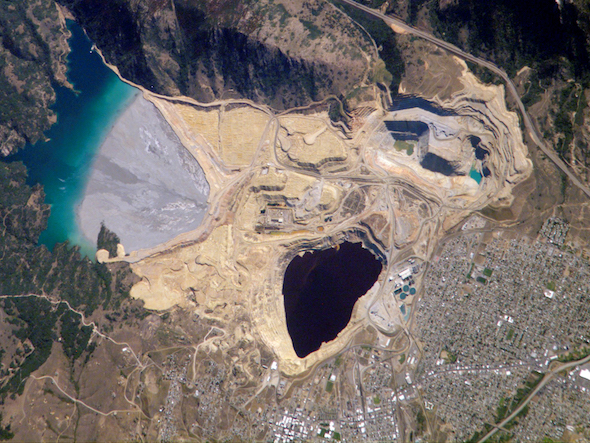The Great Transformation Part 7: Land as a Fictitious Commodity
Previous posts in this series:
The Great Transformation: Mainstream Economics and an Introduction to a New Series
The Great Transformation Part 1: The Market
The Great Transformation Part 2: More on Markets
The Great Transformation Part 3: Neoliberalism Before It Got Its New Name
The Great Transformation Part 4: Reaction and Counter-Reaction To Self-Regulating Markets
The Great Transformation Part 5: Polanyi on Marxian Analysis
The Great Transformation Part 6: Labor as a Fictitious Commodity
In Part 6, I discuss labor as one of the three fictitious commodities described by Karl Polanyi in The Great Transformation. The other two are land and money. Polanyi explains that these three elements of production do not fit his definition of commodity as something produced for consumption, and that stripping away their social significance and reducing them to the equivalent of potatoes or shoes will be a nightmarish disaster. That should be obvious in the case of labor, which is essentially our lives themselves, and it is perfectly obvious in the case of land, as we can see all around us.
In the melodramatic play The Little Foxes, Lillian Hellman has one of her characters say this :
Yeah, they got mighty well off cheating [slur]. Well, there are people who eat the earth and eat all the people on it like in the Bible with the locusts. Then there are people who stand around and watch them eat it…. Sometimes I think it ain’t right to stand and watch them do it.
The speaker is the daughter and heir of the eaters of the earth.



Nice. Understated, effective. A plethora exists of other examples. An accessible place to start is Gray Brechin’s, Imperial San Francisco.
Lands mined by the Romans in Spain remain among the most polluted on earth. So, too, do mines in South America once owned by the real Citizen Kane (whose wealth came and comes more from mines and landholdings than newspapers).
San Francisco Bay was once home to abundant marine life. Its demise did not start with pollution from the naval ports, fuel depots and ordnance sites that once ringed the Bay. Nor did its decline begin with the oil refineries in Richmond, north of Berkeley. It started with the gold rush. Forests on both sides of the Sierra Nevada were clear cut, their timber used to build shoddy waterways, trestles, bridges, mine supports, and then transcontinental railways. Water cannons, called “monitors”, were invented to blast mountains into slurry to search for gold. Pity about the mountains of earth, rock, organic matter and heavy metals that filled the Sacramento River and the Bay. Then there’s the more than 47,000 55-gallon drums of radioactive waste, produced primarily at Livermore and Berkeley, dumped at sea 30 miles outside the Golden Gate, .
That local history is replicated elsewhere, as villagers confront oil developers in Latin America and Canada and mine owners in eastern and southern Africa.
Attendees in Paris are reminding the developed world’s leaders that the third world is not a bus stop along an inevitable economic voyage to the first. It exists because there’s a first world. And vice versa.